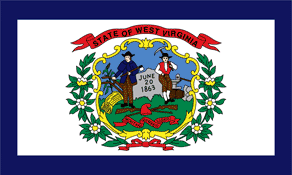West Virginia State Standards for Language Arts: Grade 8

Currently Perma-Bound only has suggested titles for grades K-8 in the Science and Social Studies areas. We are working on expanding this.
WV.RLA.S.8.1. Reading: Students will use skills to read for literacy experiences, read to inform and read to perform a task by identifying and using the dimensions ofreading components (phonemic awareness, phonics, background knowledge/vocabulary, high frequency words/fluency, comprehension, writing and motivation to read) and employing a wide variety of literature in developing independence as readers.
RLA.O.8.1.1. Compare/contrast connotation and denotation in complex passages to understand and enhance meaning of words, sentences and shorter passages.
RLA.O.8.1.2. Use knowledge of Greek and Latin roots, prefixes and suffixes to determine the meaning of words, spell words, change word meanings and generate new words appropriate to grade level, recognize that knowledge of the origins and history of word meanings enhances understanding of a word's meaning
RLA.O.8.1.3. Use etymology, context clues, affixes, synonyms or antonyms to increase grade appropriate vocabulary.
RLA.O.8.1.4. Analyze the defining characteristics, build background knowledge and apply reading skills to understand a variety of literary passages and genres by West Virginia, national and international authors:
RLA.O.8.1.4.a. Fiction
RLA.O.8.1.4.b. Nonfiction
RLA.O.8.1.4.c. Myths
RLA.O.8.1.4.d. Fantasies
RLA.O.8.1.4.e. Biographies
RLA.O.8.1.4.f. Autobiographies
RLA.O.8.1.4.g. Science fiction
RLA.O.8.1.4.h. Tall tales supernatural tales
RLA.O.8.1.5. Use pre-reading and comprehension strategies (e.g., generating questions and previewing, activating and evaluating prior knowledge and scanning or skimming texts) to critically analyze and evaluate the composition ofliterary and informational texts for
RLA.O.8.1.5.a. Making judgments
RLA.O.8.1.5.b. Hypothesizing
RLA.O.8.1.5.c. Making complex or abstract summaries
RLA.O.8.1.6. Determine and interpret the elements of literature to construct meaning and recognize author's purpose and/or reader's purpose:
RLA.O.8.1.6.a. Theme
RLA.O.8.1.6.b. Character
RLA.O.8.1.6.c. Setting
RLA.O.8.1.6.d. Internal conflict
RLA.O.8.1.6.e. Rising and falling action
RLA.O.8.1.6.f. Point of view
RLA.O.8.1.6.g. Antagonist
RLA.O.8.1.6.h. Protagonist
RLA.O.8.1.6.i. Hero
RLA.O.8.1.7. Analyze and draw parallels between common themes across a variety of literature and information text (e.g., friendship, honesty, loyalty, survival).
RLA.O.8.1.8. Recognize connections among ideas in literary and informational text (e.g. text to self, text-to-text, text to world connection) and recognize that global awareness promotes understanding, tolerance, and acceptance of ethnic, cultural, religious and personal differences.
RLA.O.8.1.9. Summarize explicit and implied information from literary and informational texts to recognize the relationships among the facts, ideas, events and concepts (e.g., names, dates, events, organizational patterns, graphical representations as found in photographs, captions, maps, tables or timelines, textual features including table of contents, headings or side bars).
RLA.O.8.1.10. Evaluate the effect of figurative language in text.
RLA.O.8.1.11. Read, compare and interpret types of poetry (e.g., narrative poems, ballads, lyric, epic) and interpret elements (e.g., lines, stanzas, rhythm, meter or rhyme) to derive meaning of poetry.
RLA.O.8.1.12. Identify literary technique used to interpret literature:
RLA.O.8.1.12.a. Irony
RLA.O.8.1.12.b. Satire
RLA.O.8.1.12.c. Persuasive language
RLA.O.8.1.12.d. Analogies
RLA.O.8.1.13. Use examples and details in practical texts to make inferences and logical predications about outcomes of procedures in such texts.
RLA.O.8.1.14. Critique the usefulness of the form and content of practical texts and judge the importance of certain steps and procedures in such texts.
RLA.O.8.1.15. Increase amount of independent reading and select appropriate graphic organizers (e.g., diagrams, flow charts, story maps, outlines, concept maps, tables, reading guides) to analyze relationships among more complex ideas generated while reading.
WV.RLA.S.8.2. Writing: Students will apply writing skills and strategies to communicate effectively for different purposes by using the writing process, applying grammatical and mechanical properties in writing and selecting and evaluating information for research purposes.
RLA.O.8.2.1. Use notes to create an outlinefor developing a written and/or oral presentationnoting the inclusion of computer graphics.
RLA.O.8.2.2. Analyze how analogies, illustrations, examples, and anecdotes are used to enhance oral and written communication (e.g., letters, poems, brief reports, descriptions, extended texts, illustrations).
RLA.O.8.2.3. Use pre-writing, editing and revision techniques (e.g., read, draft aloud, peer feedback or a provided rubric) to vary sentence length, change sentence order, eliminate organizational errors, and use vivid and concise words to create a personal style or voice while clarifying and enhancing the central idea.
RLA.O.8.2.4. Use the five-step writing process (pre-writing, drafting, revising, editing, publishing) to develop a creative or reflective composition (e.g., reflect on an experience or time in the past, draw upon imagination) and identify areas for further research by making personal connections to self, to texts, and to the world to demonstrate that written communication is affected by choices writers make in language, tone and voice.
RLA.O.8.2.5. From a prompt use the five-step writing process to develop a focused composition that contains specific, relevant details, and vivid, precise words.
RLA.O.8.2.6. Recognize and write a simple thesis statement.
RLA.O.8.2.7 Independently resolve information conflicts and validate information through assessing, researching and comparing data.
RLA.O.8.2.8. Conduct research by gathering, evaluating, and synthesizing data from a variety of sources:
RLA.O.8.2.8.a. Internet
RLA.O.8.2.8.b. Databases for periodicals/newspapers
RLA.O.8.2.8.c. Interviews
RLA.O.8.2.8.d. Reference books
RLA.O.8.2.8.e. Card catalogue
RLA.O.8.2.8.f. Miscellaneous resource materials
RLA.O.8.2.9. Select and use a variety of resource materials to plan, develop, and deliver a research project (5 pages) with documented sources, using multiple computer-generated graphic aids.
WV.RLA.S.8.3. Listening, Speaking and Media Literacy: Students will apply listening, speaking and media literacy skills and strategies to communicate with a variety of audiences and for different purposes.
RLA.O.8.3.1. Model effective oral communication skills (e.g., tone, volume, rate, audience, etiquette, standard English) through the presentation of
RLA.O.8.3.1.a. Compositions
RLA.O.8.3.1.b. Reports
RLA.O.8.3.1.c. Scripts
RLA.O.8.3.2. Present an oral report with computer-generated graphic aids (e.g., tables, graphs, diagrams or charts).
RLA.O.8.3.3. Critique oral/visual information presented, relate personal experiences and apply the information to global situations.
RLA.O.8.3.4. Listen in order to analyze and critique information received in spoken texts (e.g., of a guest speaker, informational video, televised interview or radio news program).
RLA.O.8.3.5. Perform a variety of roles in group discussions:
RLA.O.8.3.5.a. Collaboration
RLA.O.8.3.5.b. Facilitation
RLA.O.8.3.5.c. Persuasion
RLA.O.8.3.6. Properly uses private and public information.
RLA.O.8.3.7. Plan, create, organize, and present an age-appropriate media product that demonstrates format, purpose, and audience.